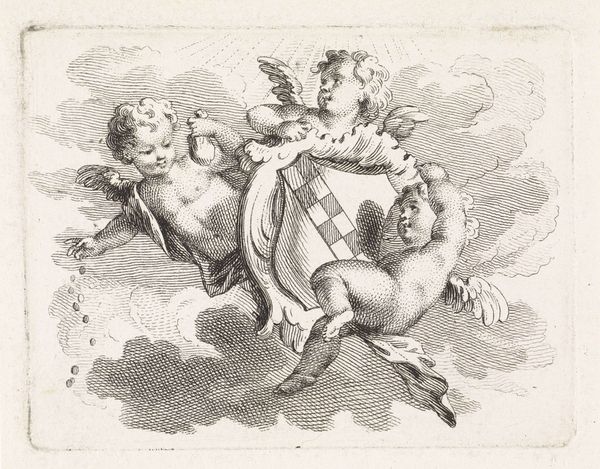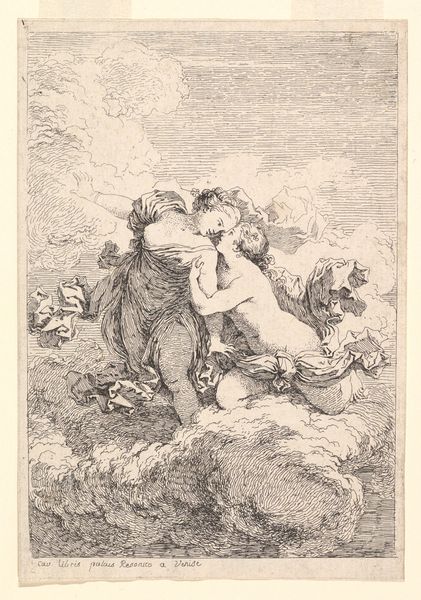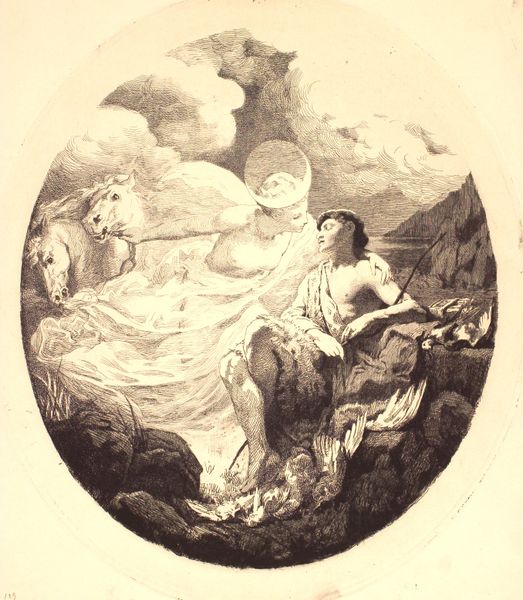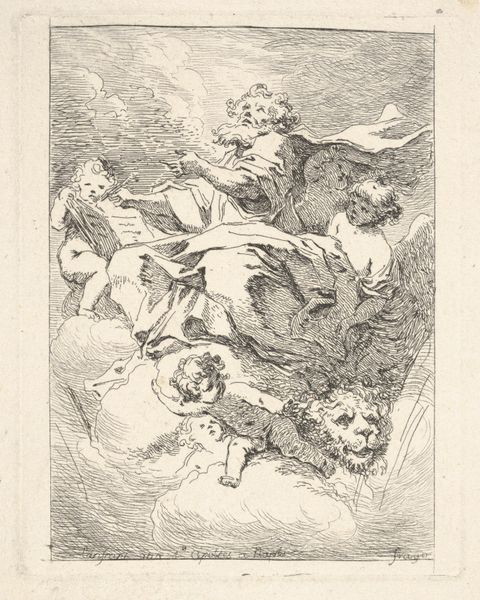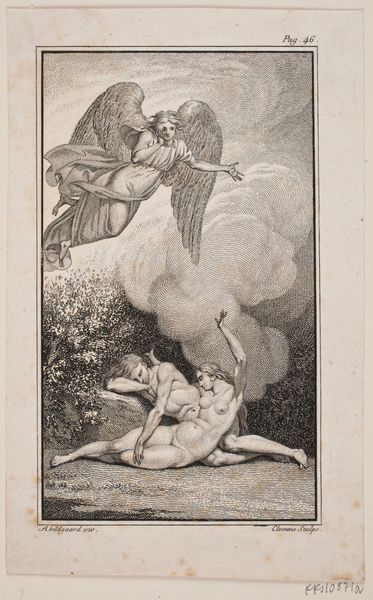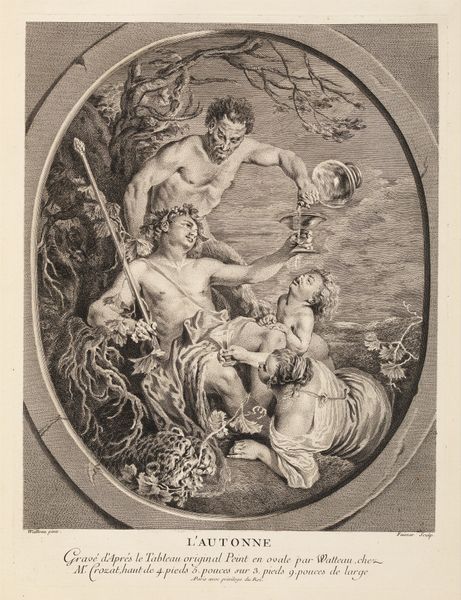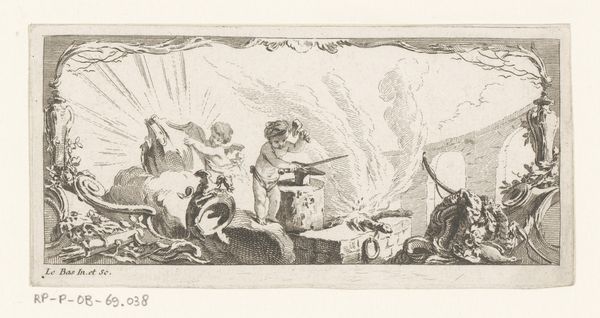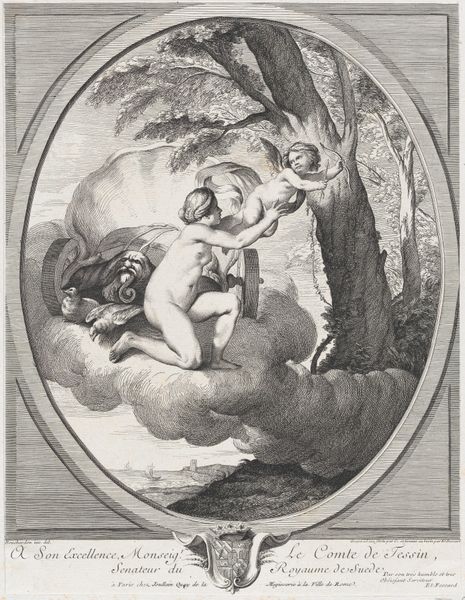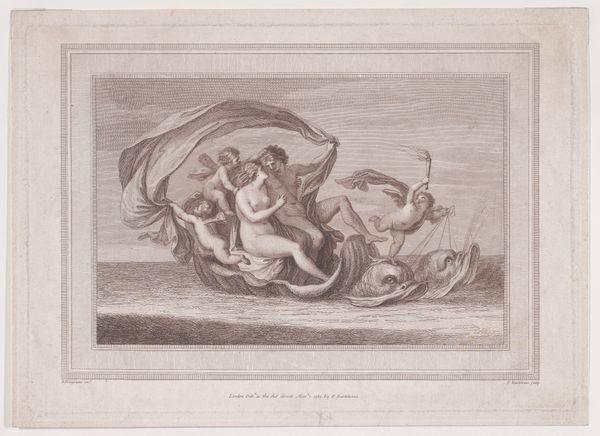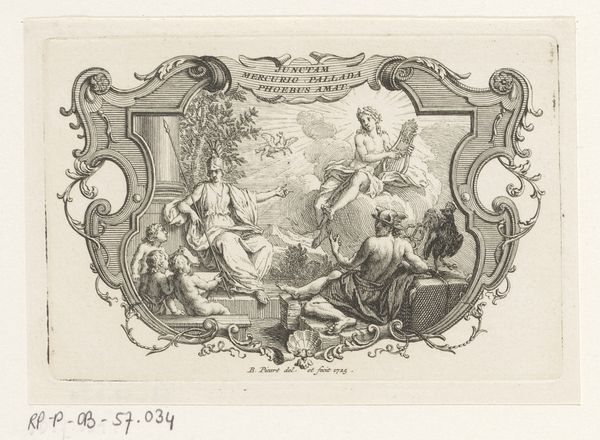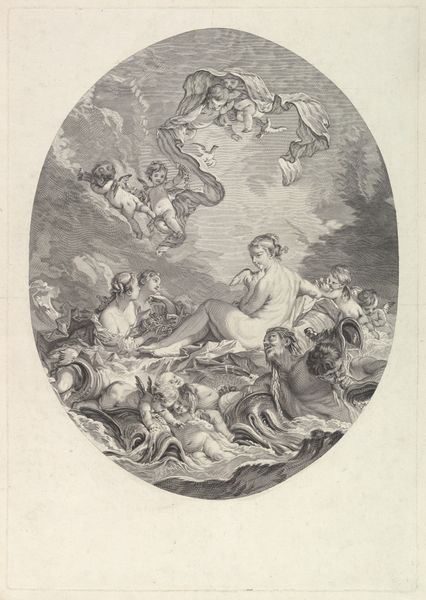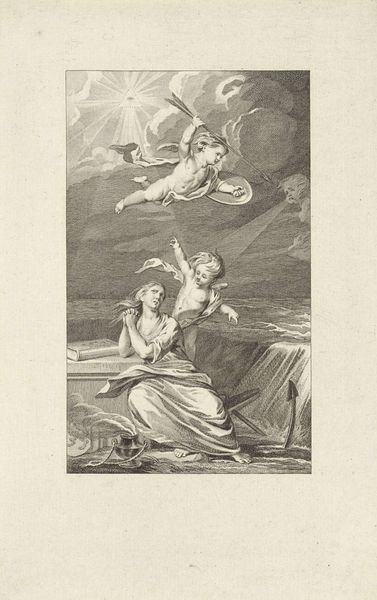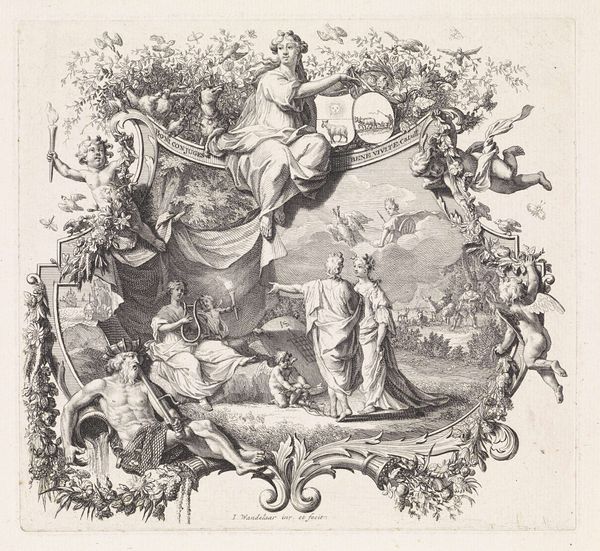
Copyright: National Gallery of Art: CC0 1.0
Editor: Honore Daumier's lithograph, "Le Nid abandonné," created in 1851, depicts figures clustered in a nest-like structure, framed elaborately. It’s a bit unsettling. The figures have grotesque features, yet the style hints at Romanticism. What’s your interpretation? Curator: I see this piece deeply rooted in the socio-political climate of 19th century France, especially the post-revolution disillusionment. Daumier often used caricature to critique the bourgeoisie and the political elite. Do you notice how the "abandoned nest" becomes a metaphor? Editor: You mean for a society perhaps? Curator: Precisely. Consider the institution of family, idealized in art but often rife with struggle, abandonment, and societal pressures. The exaggerated features – the bulging eyes, gaping mouths – strip away any sense of sentimental idealism. They represent the harsh realities people faced. Think about the role of print media at the time – how did it shape public opinion and challenge established norms? Editor: So, Daumier uses caricature not just for humor, but as a social commentary weapon? Curator: Absolutely. Lithography allowed for wider dissemination of these critiques. It democratized art and gave voice to dissent, which put pressure on those in power, even indirectly by simply offering this unsettling artwork into the field of aesthetic discourse. Editor: That makes so much sense. I hadn’t thought about the impact of printmaking itself. Curator: Considering the public role of art clarifies so much! I see now that "Le Nid abandonné" is much more than just a caricature; it's a poignant social commentary, amplified by the medium it was created in. Editor: It’s fascinating to understand the layers of meaning embedded within the work through its historical context. Thank you for illuminating it for me!
Comments
No comments
Be the first to comment and join the conversation on the ultimate creative platform.
